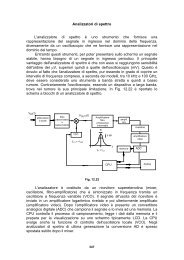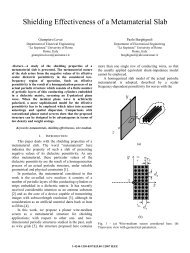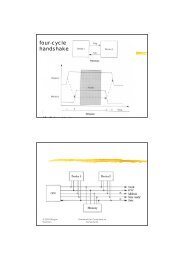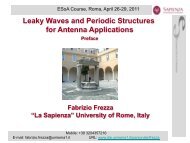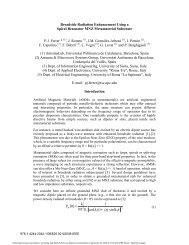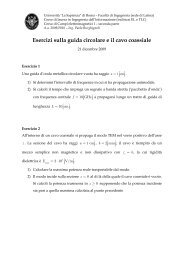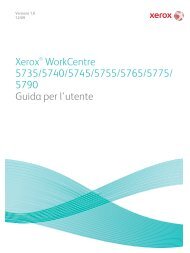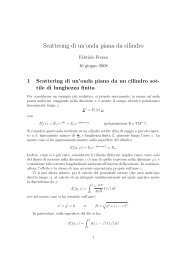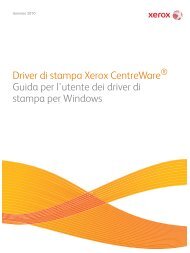Introduction to Traveling-Wave antennas.pdf
Introduction to Traveling-Wave antennas.pdf
Introduction to Traveling-Wave antennas.pdf
You also want an ePaper? Increase the reach of your titles
YUMPU automatically turns print PDFs into web optimized ePapers that Google loves.
4 <strong>Introduction</strong> <strong>to</strong> TWAindependent of frequency. On the contrary, when the guiding structure is partlyfilled with dielectric, the transverse wavenumber k t is a function of frequency, sothat ∆θ changes as the beam is frequency scanned. On the other hand, with respect<strong>to</strong> frequency sensitivity, i.e., how quickly the beam angle scans as the frequency isvaried, the partly dielectric-loaded structure can scan over a larger range of anglesfor the same frequency change and is therefore preferred.Figure 2: Dispersion Curves (effective refractive index)In response <strong>to</strong> requirements at millimeter wavelengths, the new <strong>antennas</strong> weregenerally based on lower-loss open waveguides. One possible mechanism <strong>to</strong> obtainradiation is foreshortening a side. Let us consider for example the nonradiativedielectric guide (NRD).Figure 3: Non Radiative Dielectric guideThe spacing a between the metal plates is less than λo so that all junctions and2discontinuities (also curves) that maintain symmetry become purely reactive, insteadof possessing radiative content. When the vertical metal plates in the NRD guide areEuropean School of Antennas




